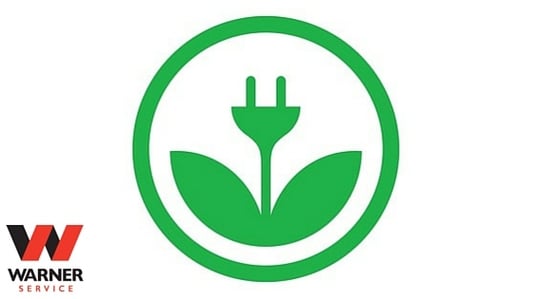
There is a huge push to be environmentally friendly these days. From hanging your clothes out to dry and bicycling to work to eating non-genetically-modified ingredients and recycling, there are a million and two ways to go green. Homeowners can even use energy-efficient appliances to stay eco-friendly, but these appliances come with so many different energy performance ratings, it’s hard to determine which is best for your home and which is best for the environment. To help you understand what everything means, here’s Warner Service’s breakdown on energy performance ratings:
AFUE: This rating stands for Annual Fuel Utilization Efficiency and is used for gas and oil-fired furnaces. This energy stat tells homeowners how much of the fuel consumed by the furnace is used to heat the home and how much is wasted. The higher the AFUE rating is, the greater the efficiency. Homeowners can find the AFUE rating on a small metal plate attached to the furnace. If you can’t find it, contact the manufacturer with the furnace’s serial number.
COP: This rating stands for Coefficient of Performance and is used for certain heat pumps. This energy stat tells homeowners how efficient the heat pump is while on the job. The higher the COP rating is, the greater the efficiency. Homeowners can calculate this rating by dividing the energy produced by the heat pump (in watts) by the energy consumed (in watts).
EER: This rating stands for Energy Efficiency Rating. (Talk about easy to remember.) It’s used for geothermal systems, air conditioners and air source heat pumps. This energy stat tells homeowners how efficient the cooling system is. Homeowners can calculate this energy rating by dividing a product’s BTU output by the power it uses (in watts). Like everything else, the higher the rating is, the better. The lower the value is, the more efficient the home.
EF: This rating stands for Energy Factor and is used for water heaters. This energy stat measures the over efficiency of the appliance by using heat transfer efficiency, the percentage of energy lost, and the percentage of standby energy. The higher the EF is, the better the water heater.
Energy Star: This rating is part of a voluntary program used to identify energy-efficient products that help reduce greenhouse gas emissions. From major appliances, lighting and home electronics, these products will have an Energy Star label on them.
HERS: This rating stands for Home Energy Rating System and is used for the whole home as it measures the entire energy performance. Its variables include exterior walls, floors, ceilings, the roof, the attic, the foundation, crawl spaces, windows, doors, vents, ductwork, HVAC systems, water heaters and the thermostat.
HSPF: This rating stands for Heating Seasonal Performance Factor and is used for heat pumps. It measures the efficiency of the heat pump while on the job. Rule of thumb: The higher the rating is, the better the appliance.
Low-VOC: This rating stands for Low-Volatile Organic Compounds and is used for paint and finishes. They contain fewer toxins that are harmful to the environment.
SEER: This rating stands for Seasonal Energy Efficiency Ratio and is used for air conditioners and heat pumps. It measures the efficiency of the A/C’s cooling process. The higher the energy rating is, the better the appliance is.
We hope that the next time you’re shopping for a major home appliance, you consider referencing these energy performance ratings. From eco-friendly water heaters to “green” paint, there are many different ways to become environmentally aware around your home. You can even invest in these cool, ecological gadgets, too.
If you have any questions or comments or would like to schedule a maintenance check-up, contact Warner Service today.


